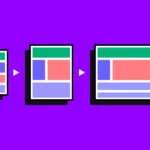CSS Grid has emerged as a powerful layout system that revolutionized the way web developers design and structure web pages. Over the years, CSS Grid has evolved, introducing new features and capabilities that enhance its flexibility and usability. In this comprehensive guide, we’ll delve into the evolution of CSS Grid, exploring its origins, key features, and the ways it has transformed web development.
- Origins of CSS Grid: CSS Grid was first introduced as a layout system in the early 2010s, aiming to address the limitations of existing layout techniques. It was designed to provide web developers with a more intuitive and powerful way to create complex and responsive layouts.
- Key Concepts and Features: CSS Grid operates on a two-dimensional grid system, allowing developers to define both rows and columns for precise control over the layout. Key concepts include grid containers and grid items, each with their own set of properties that determine the placement and sizing of elements within the grid.
- Browser Support and Adoption: Initially, browser support for CSS Grid was limited, but as web standards evolved, major browsers embraced this powerful layout tool. Today, CSS Grid enjoys widespread support, making it a reliable choice for modern web development projects.
- Responsive Design with CSS Grid: One of the significant advantages of CSS Grid is its ability to facilitate responsive design effortlessly. Developers can create layouts that adapt seamlessly to different screen sizes and devices, streamlining the development process and improving user experience.
- Subgrid and Advanced Features: With the evolution of CSS Grid, new features have been introduced to enhance its capabilities. Subgrid, for example, allows nested grids to inherit the sizing of the parent grid, simplifying the creation of complex layouts. Advanced features like grid-template-areas further contribute to the flexibility and expressiveness of CSS Grid.
- Best Practices and Tips: As CSS Grid has become an integral part of web development, adopting best practices is crucial. This section will cover tips for optimizing grid layouts, handling fallbacks for older browsers, and leveraging CSS Grid alongside other layout methods for maximum compatibility.
- Use Cases and Examples: To illustrate the versatility of CSS Grid, this section will showcase real-world use cases and examples. From simple two-column layouts to intricate magazine-style grids, CSS Grid can be applied creatively to meet diverse design requirements.
- Looking Ahead: The Future of CSS Grid: The web development landscape is dynamic, and CSS Grid continues to evolve. This section will provide insights into potential future developments, such as new features, browser support improvements, and how CSS Grid might adapt to emerging design trends.
CSS Grid has come a long way since its inception, transforming the way web developers approach layout design. Its intuitive syntax, powerful features, and widespread support make it an essential tool for modern web development. By understanding the evolution of CSS Grid and staying informed about its latest features, web developers can harness its full potential to create stunning and responsive web layouts.


